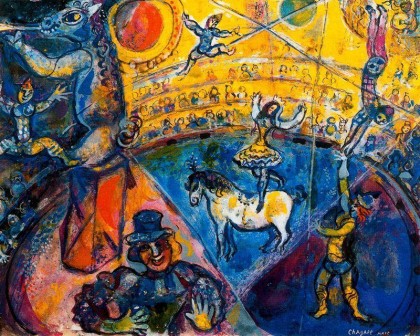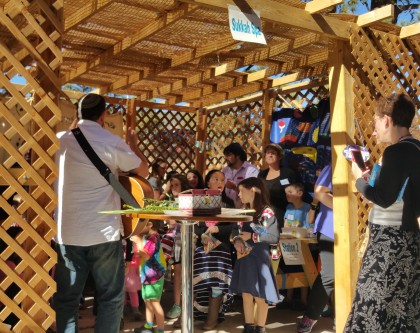Fall Hunter Moon

This trip into Judaism, my journey as a fellow traveler, has begun to transfer into strange territory. Both the Reconstructionist movement and a newer one, the Renewal movement, have representation at Beth Evergreen. They are, I think, the result of rabbis and scholars beginning to ask a question similar to the one I’ve posed in my reimagining faith project. That is, how can the religious imagination, that poetic impulse in the human spirit, respond to contemporary life?
The answers in both Reconstruction and Renewal are still opaque to me, largely because of my ignorance of their fine-grained details. But I know this already, there is a strong contingent in both movements that lean pagan, that follow many of the Jewish practices back to their earth-centered roots. Sukkot is an excellent example since it is a harvest celebration as well as a commemoration of the Exodus. The sukkah, the booth built outside and used for informal gatherings, recapitulates the temporary shelters agricultural workers in ancient Israel would use while engaged in the all important task of ingathering crops.
 Yesterday Kate and I went to the Sukkot sabbath, a day focused on children and religious education, utilizing the Sukkah as a place to gather the kids. Rabbie Jamie played his guitar and led them in song, parents and older adolescents participating, too.
Yesterday Kate and I went to the Sukkot sabbath, a day focused on children and religious education, utilizing the Sukkah as a place to gather the kids. Rabbie Jamie played his guitar and led them in song, parents and older adolescents participating, too.
There are, I now know, people at Beth Evergreen who combine Judaism and paganism. One woman calls herself a Jewitch. Another has a strong element of sun-earth-moon worship in her approach to the tradition. And, there is me. I’m there because of my love for Kate and a long time fascination with Judaism, really more the Jews I’ve known, and what I see now as an incurably religious poetic soul.
I am religious with a small r, no longer interested in dogma or institutions, but with an abiding appreciation for religious community and the quest of the religious self. In this sense I suppose Kate could have been a Hindu and I would have followed along, not as a believer, but as an appreciator, as one willing to use the deep metaphors to understand my own life.
A beloved community, one where love and affection dominate abstract thought, but do not eliminate it, is a place where I can flourish even without embracing a theological position. Beth Evergreen is, I believe, such a community. How I’ll end up attached to it, I don’t yet know, but it will come from knowing individuals, their dreams and their passions. My suspicion is that it will be the great work, creating a sustainable presence for humans on the earth, that opens the way.
